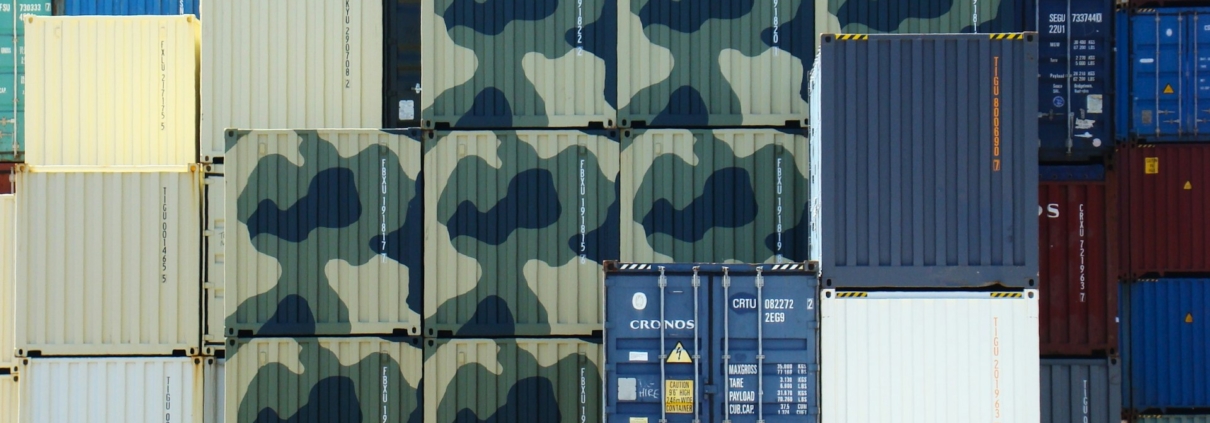Weatherproof Your Shipments: Tactics for Handling Weather Challenges in Container Transport
Container transport can be a smooth ride, but weather often throws in some surprises. From heavy rains and strong winds to unexpected storms, the weather presents real challenges. These can delay shipments, damage cargo, and disrupt operations if not managed well.
Staying ahead of the weather is crucial. Knowing what to expect and planning accordingly can save time and money while keeping cargo safe. By monitoring forecasts and adjusting transport plans, businesses can avoid troubled areas and ensure containers reach their destinations intact.
Understanding how to protect containers against the elements is equally important. Whether through weatherproofing or adjusting schedules, the right preparations can make a significant difference. With the right strategies, adverse weather becomes just another condition to manage, not an obstacle.
Preparing for Weather Conditions
Weather can be unpredictable and poses several challenges in container transport. Heavy rains, strong winds, and storms can impact the timeline for deliveries. Wet conditions can cause roads to become slippery and unsafe, while high winds might make driving hazardous. Snow or ice can also cause delays, especially where roads become impassable. Effective planning helps mitigate these risks and ensure smoother operations.
Monitoring weather forecasts becomes essential for anticipating these challenges. Keeping a close eye on weather trends helps transport services adjust plans when necessary. Regular updates from reliable weather services can provide information critical in making timely decisions. It is important to check conditions not just at the starting point and destination but also along the entire route.
Pre-planning routes is another key step. By identifying severe weather regions ahead of time, transport services can reroute to avoid potential delays and risk-prone areas. This might mean taking a longer route to ensure the safety of the cargo and timely delivery. Using alternate routes also helps in avoiding traffic congestion typically caused by adverse weather conditions. It’s all about being proactive and staying prepared to adapt plans as needed.
Securing Containers Against Weather Impact
Protecting cargo from the weather starts with weatherproofing containers. Different techniques keep cargo safe from elements such as rain, snow, and wind. One effective method is using high-quality weather-resistant materials for the containers themselves. This ensures they can withstand harsh conditions without compromising the contents inside.
Protective coverings and sealing methods play a significant role. Tarpaulins, plastic covers, and waterproof seals help in keeping the cargo dry and safe. Containers should be checked for any leaks or damage beforehand to prevent any potential water ingress. It’s wise to ensure that seals are intact and that doors close tightly to keep water and moisture out.
Proper positioning of cargo inside the containers is crucial to minimise weather-related damage. Load cargo in a stable manner so that it doesn’t shift, even when external conditions are rough. Consider placing more sensitive items away from the container walls where they might experience temperature fluctuations. Securing items with straps or braces can help prevent movement and potential damage from rough conditions outside. This careful packing prevents unnecessary wear and tear, ensuring the cargo arrives in perfect condition.
Adjusting Operations During Adverse Weather
Adverse weather requires flexible operations to maintain efficiency and safety. Modifying transport schedules becomes crucial when weather forecasts indicate potential disruptions. This might mean delaying departures during a storm or rerouting to bypass affected areas.
Effective communication with logistics teams and partners is essential in such scenarios. Keeping everyone informed helps in coordinating alternate plans and ensuring all parties adjust their schedules accordingly. This communication minimises confusion and keeps operations running as smoothly as possible.
Having contingency plans in place is another key strategy. Preparing for unexpected weather events allows for quick decision-making. For example, establishing backup routes means you can swiftly shift plans instead of scrambling for alternatives. Regularly updating these plans based on new weather data ensures they remain effective.
By staying proactive and maintaining open lines of communication, businesses can navigate adverse weather conditions with less disruption. This approach ensures that cargo continues to move efficiently, safeguarding against potential weather-induced delays.
Leveraging Technology to Mitigate Weather Risks
Technology serves as a strong ally in mitigating weather risks during transport. Real-time weather monitoring tools provide up-to-date alerts about changing conditions. With these tools, drivers and logistics managers can make informed decisions, such as adjusting routes or schedules promptly.
Data analytics further improves decision-making by offering insights into weather patterns. By analysing this information, companies can predict potential disruptions and plan accordingly, mitigating risks before they impact operations.
Technology also optimises route planning for safety during severe weather. Advanced software considers factors like road closures or severe weather warnings and suggests safer alternate routes. This capability enhances safety for the drivers and protects cargo by steering clear of hazardous conditions.
Embracing these technologies helps businesses stay agile during adverse weather. By integrating these tools into regular operations, companies can maintain reliable and efficient transport services, even when the weather poses challenges.
Conclusion
Efficient weather management has become an integral part of container transport. From preparing for various weather-related challenges to leveraging cutting-edge technology, businesses have several tools to ensure safety and efficiency. These strategies not only keep goods protected but also maintain delivery schedules, reinforcing reliability.
As unpredictable weather events become more common, having a robust weather management plan is vital. It’s about thinking ahead and having the right strategies in place to respond effectively. By doing so, companies not only protect their cargo but also sustain customer trust and satisfaction.
For expert assistance in navigating weather-related container transport challenges, DNV Transport stands ready to support your needs. With years of experience and a focus on reliability and safety, we can help ensure your shipments reach their destination securely. Contact DNV Transport today to learn more about our tailored transport solutions.




